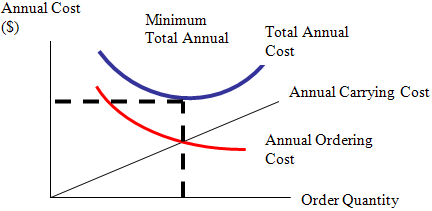Companys approach to Inventory Health
April 3, 2025
 Companys approach to Inventory Health
Companys approach to Inventory Health
Inventory means an item of value and asset in the books of the Company. This is the most important category of item that needs to be focused upon by the management for in its management lies the business efficiency as well as profits. Inventory holding is a must for any business organization that is into…
 Inventory Management Systems
Inventory Management Systems
Modern day inventory is managed by sophisticated system applications that are designed to manage complex inventory plans and to a large extent contain processes that initiate and streamline the operations and inventory management. In the wake of improvements in the communication technology, companies are deploying one single ERP system across all factories, offices, departments and…
 Why and When to avoid Holding Inventories
Why and When to avoid Holding Inventories
Every business organization that is engaged in manufacturing, trading or dealing with salable products holds inventories in one form another. Inventory is held in the form of raw materials or in the form of salable goods. Since every unit of inventoried item has an economic value and is itemized in the books of account of…
Every organization that is engaged in production, sale or trading of Products holds inventory in one or the other form. While production and manufacturing organizations hold raw material inventories, finished goods and spare parts inventories, trading companies might hold only finished goods inventories depending upon the business model.
When in case of raw material inventory management function is essentially dealing with two major functions. First function deals with inventory planning and the second being inventory tracking. As inventory planners, their main job consists in analyzing demand and deciding when to order and how much to order new inventories. Traditional inventory management approach consists of two models namely:

Example: Biotech.Co produces chemicals to sell to wholesalers. One of the raw material it buys is sodium nitrate which is purchased at the rate of $22.50 per ton. Biotech’s forecasts show a estimated requirement of 5,75,000 tons of sodium nitrate for the coming year. The annual total carrying cost for this material is 40% of acquisition cost and the ordering cost is $595. What is the Most Economical Order Quantity ?
D = Annual Demand
C = Carrying Cost
S = Ordering Cost
D = 5,75,000 tons
C =0.40(22.50) = $9.00/Ton/Year
S = $595/Order
= 27,573.135 tons per Order.
This model pre supposes certain assumptions as under:
In this model, the demand increases for production the inventory gets depleted. When the inventory drops to a critical point the re order process gets triggered. New order is always place for fixed quantities. On receipt of the delivery against the order the inventory level goes up.
Using this model, further data extrapolation is possible to determine other factors like how many orders are to be placed in a year and what is the time lapse between orders etc.
This model is also used to determine the order size and the production lot for an item to be produced at one stage of production and stored as work in progress inventory to be supplied to the next state of production or to the customer.
Your email address will not be published. Required fields are marked *